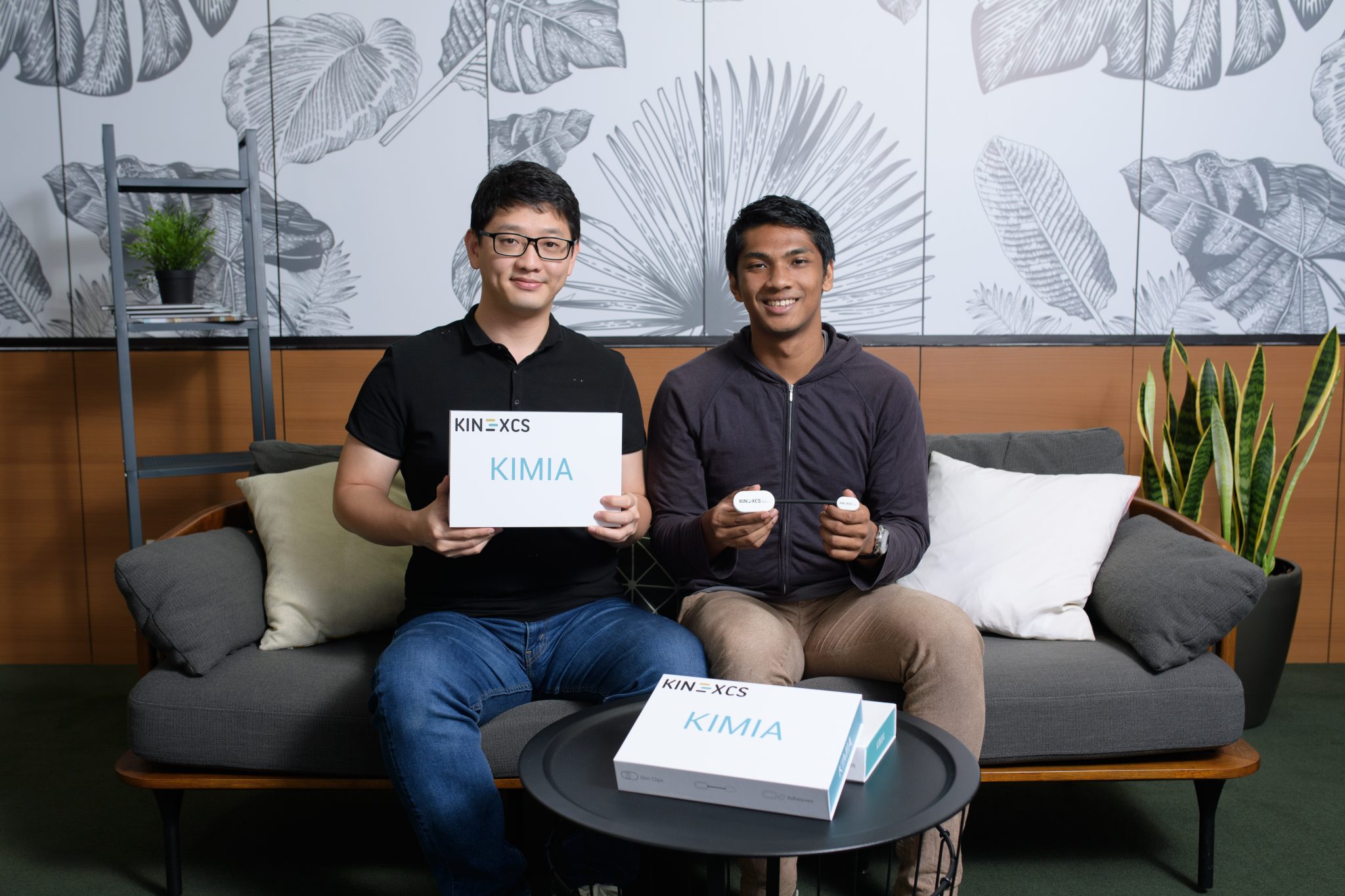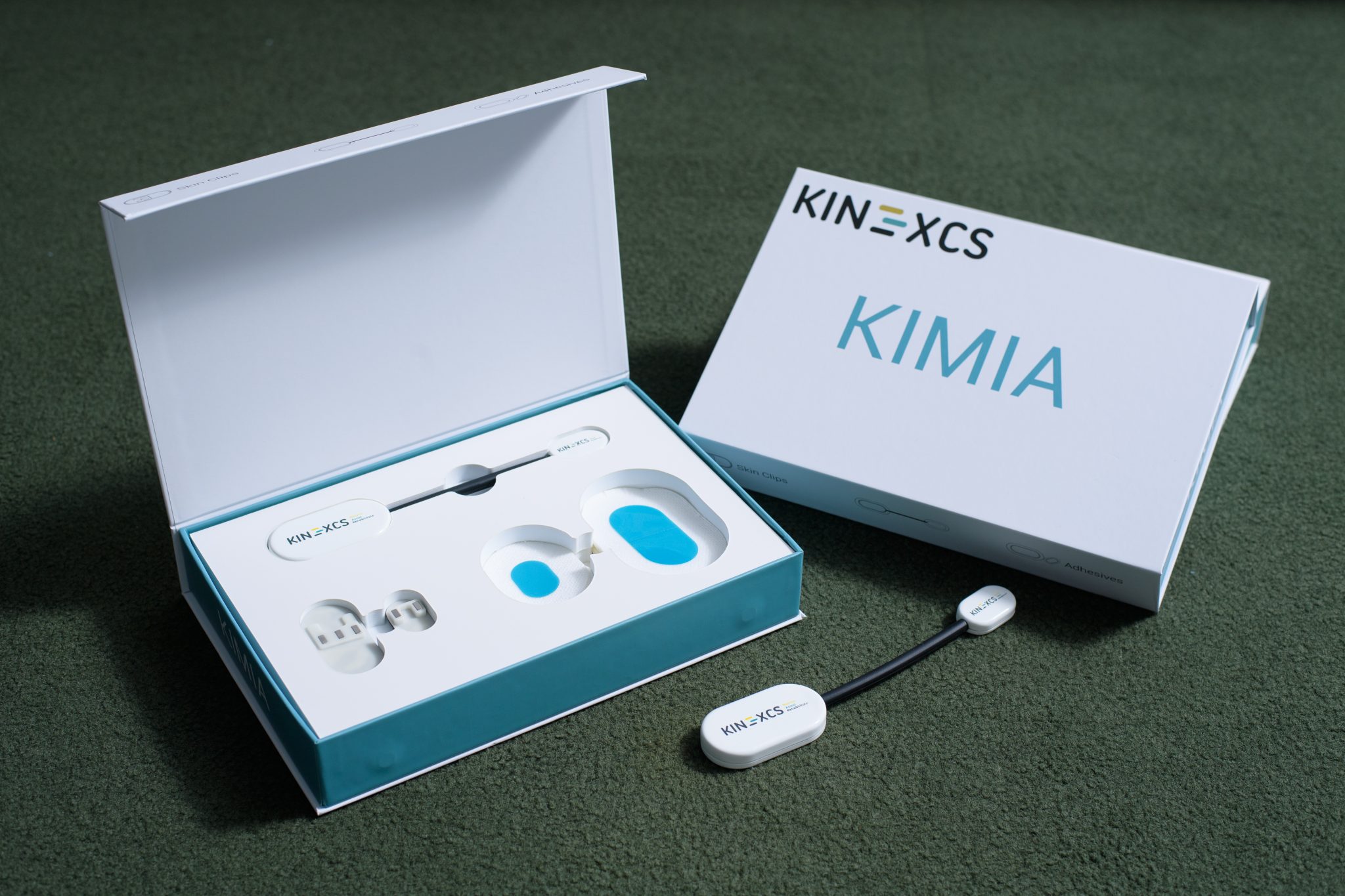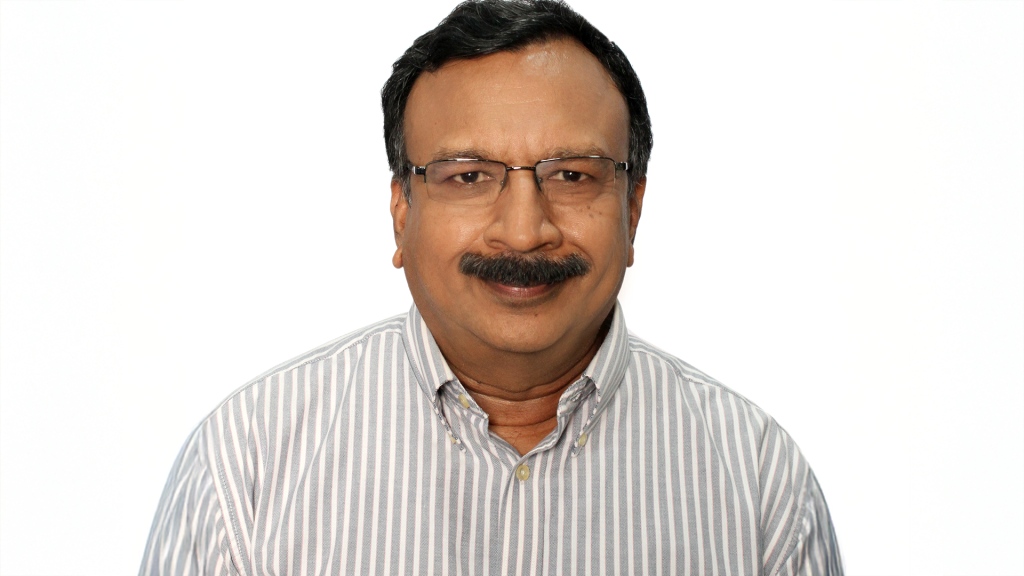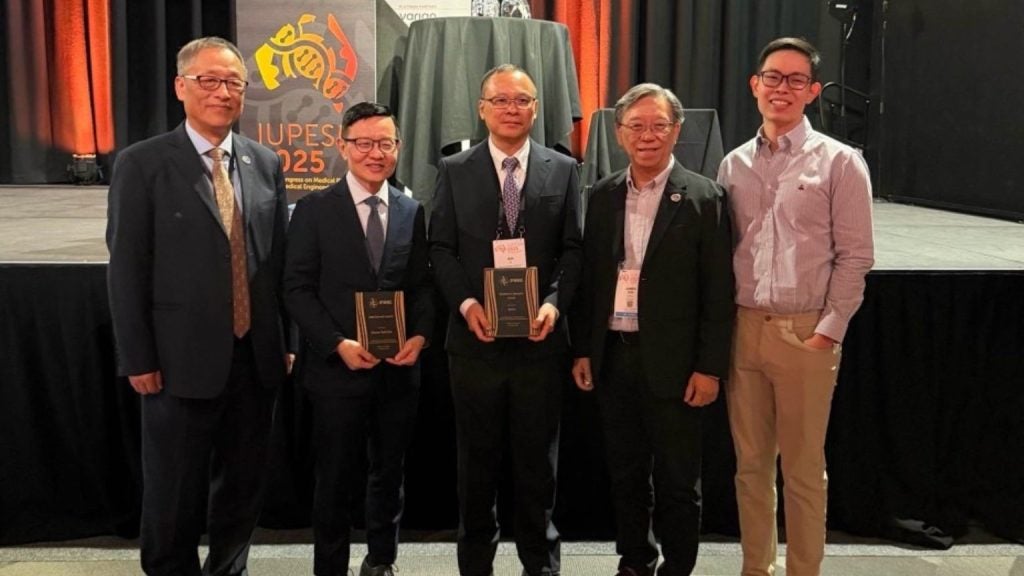
"A knee injury" - three painful words that evoke dread among athletes, sportsmen and thousands of others every year. Sporting greats including Roger Federer, Stephen Curry and Tiger Woods have been sidelined for months after suffering knee injuries, enduring a long and lonely recovery, unable to practice their craft.
While technology and medical science have made huge strides in recent years, physiotherapy has largely relied on decades of accumulated wisdom to help patients relieve pain and regain their joint strength and mobility. Two NUS Engineering alumni saw in this an opportunity to bring the information revolution to physiotherapy.
Ricky Guo and Aaron Ramzeen are coinventors of KIMIA, a wearable sensor to assist in knee physiotherapy, using proprietary sensor technology and data analytics to monitor the patient's knee movements during at-home exercise sessions and throughout everyday activities. In September, their efforts saw them named as Singapore National Winners of the 2020 James Dyson Award, an international award recognising current and recent students from design and engineering schools for innovative designs that solve real-world problems.
Improving physiotherapy with technology

KIMIA is a wearable device tracking knee movement for patients undergoing physiotherapy or rehabilitation after injury or surgery. It comprises a flexible lightweight sensor attached to the side of the knee, tracking motion as the patient goes about their daily routine. The information KIMIA collects is accessed via an app, and can be used to help doctors monitor the patient's recovery and recommend appropriate exercises. The app also gives the patient real-time coaching for their physiotherapy.
KIMIA is developed at Kinexcs, a data-driven digital health company, where Ricky and Aaron lead the development of the product. They were both drawn to the prospect of entrepreneurship and joining a startup, where they could use their engineering skills.
Ricky joined Kinexcs in 2018 after finishing his Masters' in chemistry at NUS. "Back then I was exploring other entrepreneurship projects. While research is exciting in itself, the idea of making products using technology in a startup environment seemed really fulfilling," Ricky says.
Not long after, Aaron joined Kinexcs on an NUS Overseas Colleges (NOC) attachment at their operations in Shenzhen, helping to liaise with suppliers and perform product testing.
"I spent a lot of time there and loved what I was doing, so I eventually came on board full-time after I graduated," he says.
Bridging multiple domains
Developing KIMIA has been an inherently multidisciplinary project, bringing together engineering and data science to help solve a medical problem. For the coinventors, working at the confluence of multiple domains is a challenge, but not an unfamiliar one.
Ricky holds a BEng in Engineering Science and an MSc in Chemistry from NUS - a combination which he says gives him a firm foundation in the mechanical, electrical, material and digital aspects of engineering.
"I may not be the one who writes every line of the code or prints the electronic circuitry," he says, "but I have enough of a knowledge base to understand the different aspects of product design and development. Developing a complete product involves a multidisciplinary effort."
Aaron too finds his education particularly apt for his job - an NUS degree in Biomedical Engineering. But aside from the engineering knowledge and skills that he continues to use today, one particular lesson from the Innovation and Design Programme (iDP) serves him well: put the users first.
Users first

A central tenet of KIMIA's development is to always go back to the patients and doctors for feedback, tailoring the device to their needs. Each time the KIMIA team received input, they would learn from it, improve the product, and return with a new version for the users to try.
"Every single time, we tried as much as possible to implement their feedback, to make the device work for them," Aaron says.
After many cycles of tests and improvements, KIMIA is now in its third generation, having changed significantly from early prototypes. It is now in the process of regulatory approval and getting ready for market launch.
Always improving
Winning the National James Dyson Award has been a huge boost to the KIMIA team. "Winning came to us as a surprise because there were so many fantastic entries," Ricky says. "But I think it gives validation to all the hard work that we put in speaking to the patients and doctors, developing the technology and the product itself."
Despite the award, they are still hard at work looking for further ways to improve their product and methods to address other musculoskeletal problems, applying KIMIA's modular sensor to track hip, shoulder, elbow and lower back conditions. Harnessing additional technologies like electromyography - sensing the electrical activity produced when muscles move - is also part of their plans.
On the software front, they are designing a new user interface for the KIMIA app to display relevant information to the user depending on whether they are a patient or doctor and to make the product more user-friendly and fun to use.
Ultimately, throughout the long process of development and winning the award they have never lost sight of the most important thing. "It's all for the purpose of benefiting the patients at the end of the day," says Ricky.
After winning the Singapore National James Dyson Award, the team has been shortlisted in the James Dyson Award International Top 20. The world-wide winner will be personally selected from the Top 20 by Sir James Dyson and is due to be announced in November.





